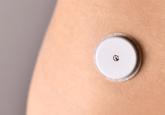New lab-on-a-chip technique to analyze single cells

Scientists from the laboratory of Horst Vogel at École polytechnique fédérale de Lausanne, (Switzerland) have developed an integrated, highly sensitive method to overcome the technical and physical challenges of studying single cells. The work, recently published in the journal Small, details the technique that combines affinity beads with microfluidics to enable the study of individual cells in a mixed population of cells, such as a tumor.
Individual cells in a population (in a tumor, for example) vary enormously in their biochemistry and function and in order to understand these variations, individual cells and their properties, such as their interactions, need to be analyzed. Challenges such as fragility and size, as well as the sheer number and vast variety of cells, have previously hindered efficient single-cell analysis.
In the new technique developed by Michael Werner, a PhD student at École polytechnique fédérale de Lausanne, a (sub)micrometer-sized silicon bead coated in a capture agent such as an antibody specifically binds to the target biomolecule inside the single cell.
The bead is taken up by the cell and becomes internalized in an intracellular phagosome, which initially prevents the bead finding its target. To escape the phagosome and release the bead, the researchers incubated the cells with a photosensitive molecule that becomes incorporated into the phagosome’s membrane, disrupting the membrane when light is shone on the cells.
Once released, the beads are able to the bind with high specificity to the target molecules, capturing and extracting them from the cell’s cytoplasm. Following this, the bead-containing cells are put through a microfluidic chip – a small device comprised of narrow (100 μm in width) channels, which only allow the flow of single cells towards a focused laser beam.
This ‘laser tweezer’ catches individual cells by interacting with their internalized beads. These cells are then lysed to leave the target molecules in the trap where they are directly analyzed in the microfluidic device.
In the study, the scientists were able to provide a proof-of-concept for the single-cell analysis method through exploring a number of different cell types. Going forward, the team will work with Centre hospitalier universitaire vaudois (Lausanne, Switzerland) to test the assay on actual tumor cancer cells., which demonstrate enormous variability in signaling profiles between individual cells.
Sources: Werner M, Palankar R, Arm L, Hovius R, Vogel H. Microfluidic Single-Cell Analysis with Affinity Beads. Small. DOI: 10.1002/smll.201402650 (2015) (Epub ahead of print); Lab-on-a-chip to study single cells.






